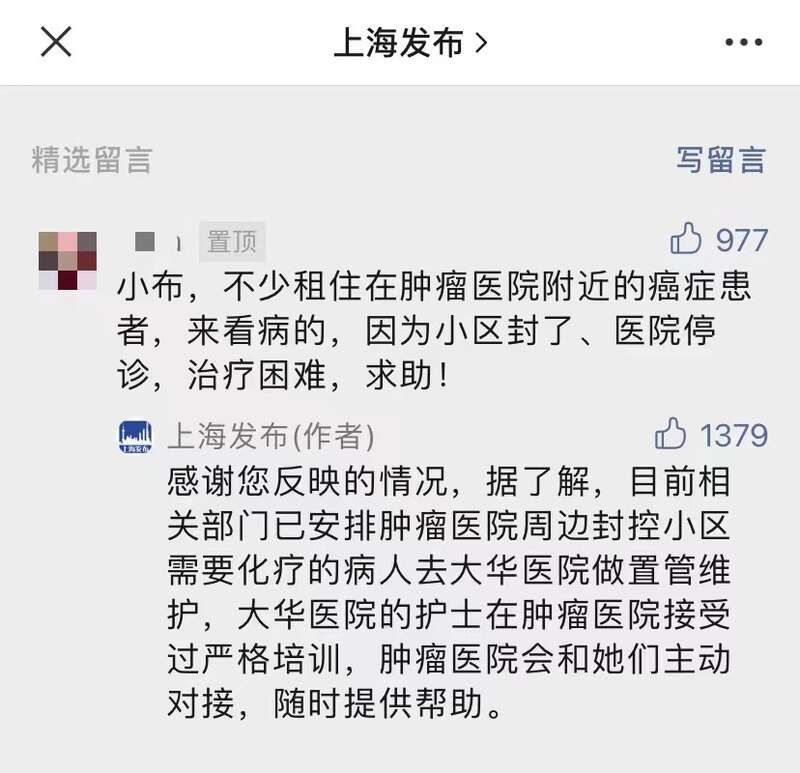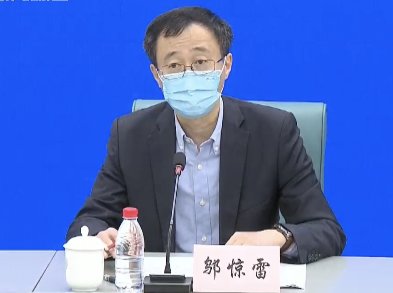China Youth Daily client, Shanghai, March 18 (China Youth Daily, China Youth Daily reporter Wei Qimeng) Yesterday, a Shanghai citizen uploaded the treatment demands of patients in the neighborhood of the tumor hospital on social networks. In this regard, Wu Jinglei, director of the Shanghai Municipal Health Commission, said at the press conference on epidemic prevention and control held today that the district has contacted the cancer hospital in time to arrange the patients to a regional hospital, and the cancer hospital will provide technical support. Relevant attending doctors have been arranged to understand the patient’s condition, explain and guide the patient well, and arrange for continued treatment on the basis of strict prevention and control of individual patients requiring radiotherapy.

“Shanghai Release” responded to citizens’ questions late last night.
Wu Jinglei said that the recent prevention and control work has had a certain impact on people seeing a doctor and seeking medical treatment. Although Shanghai has requirements for medical services, there are definitely areas that are not in place and not perfect. Shanghai has put forward requirements for various districts, and each community must take the initiative to identify the medical needs of the people in the closed and controlled communities, and to establish and improve the procedures and channels for emergency medical treatment; special requirements are imposed on medical institutions, and patients who have been sent by 120 after review shall not be excused. If preventive and control measures are taken, medical treatment should be given.
Wu Jinglei said that in response to the medical and health service needs of residents in closed and controlled communities, Shanghai has formulated some plans in accordance with the overall prevention and control requirements, and implemented targeted measures according to different types of health needs.

The first is the common medical and health service needs of residents in closed-off communities. Require local community health service centers and district-affiliated medical institutions, and require all districts to take the initiative to identify the needs of the people in the closed community, and to provide targeted services for the elderly with chronic diseases such as hypertension and diabetes, as well as follow-up for children and maternity examinations To provide services, the family doctor team of the community health service center is required to take the initiative to do a good job of docking, and at the same time to connect the resources of the higher-level hospitals, and take the initiative to care about, strengthen management and actively intervene. For patients with long-term medication needs, a long-term prescription policy for chronic diseases is given, and Internet distribution is fully used to ensure that they are guaranteed; community health service centers provide door-to-door services through family beds or outpatient visits.
The second is the need to go out to seek medical treatment during the lockdown period of the community. If it is a non-critical and critically ill patient, such as a tumor radiotherapy and chemotherapy patient, the residents can contact the street or neighborhood committee to which the closed-and-controlled community belongs, and the street-town or neighborhood-village committee will arrange a point-to-point closed-loop transfer of special vehicles to the designated medical institution for residents in the closed-and-controlled area, or Contact the relevant medical unit. After the diagnosis and treatment, it will be closed-loop transported back to the original site by a special vehicle. If it is a critically ill patient, residents can immediately contact the street town or village committee to which the closed-off community belongs, and the street town or village committee will contact the “120” emergency vehicle to transfer the patient to a designated medical institution. After the diagnosis and treatment is over, the designated medical institution should notify the closed community street or the neighborhood committee to arrange a closed-loop transfer of special vehicles back to the original site. For some residents of the closed and controlled community who directly dialed “120” without notifying the streets or village committees, the emergency center will make a judgment based on the injury and illness situation, and give priority to meeting the medical needs of critically ill patients.
The third is to require municipal hospitals to provide technical support to designated hospitals, actively respond to the consultation needs of designated hospitals, and assign experts for consultation when necessary to ensure that basic needs can be met and residents’ health is protected. At the same time, if the residents have medical needs, they should contact and report to the community channels in time to seek the orderly and normal development of work.